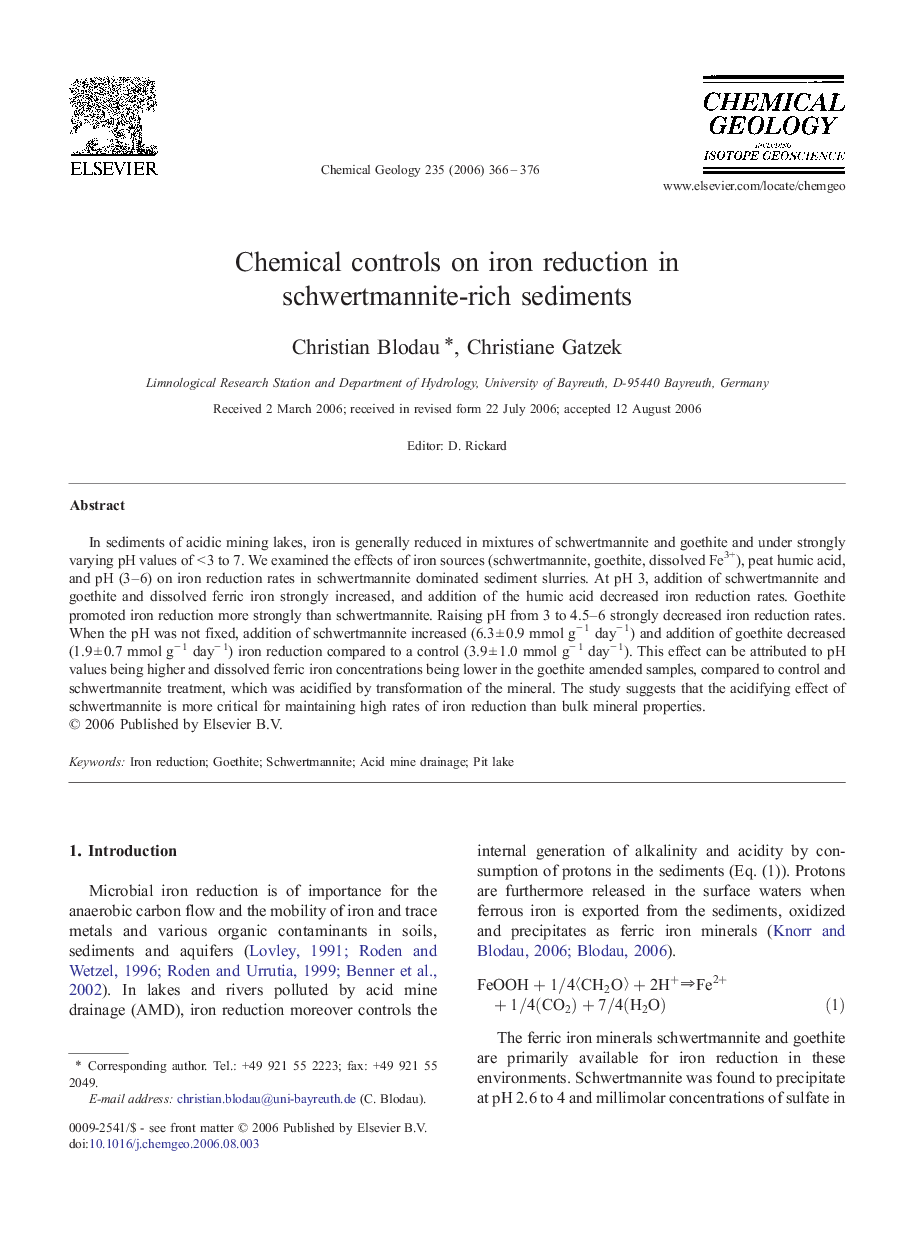| Article ID | Journal | Published Year | Pages | File Type |
|---|---|---|---|---|
| 4701257 | Chemical Geology | 2006 | 11 Pages |
In sediments of acidic mining lakes, iron is generally reduced in mixtures of schwertmannite and goethite and under strongly varying pH values of < 3 to 7. We examined the effects of iron sources (schwertmannite, goethite, dissolved Fe3+), peat humic acid, and pH (3–6) on iron reduction rates in schwertmannite dominated sediment slurries. At pH 3, addition of schwertmannite and goethite and dissolved ferric iron strongly increased, and addition of the humic acid decreased iron reduction rates. Goethite promoted iron reduction more strongly than schwertmannite. Raising pH from 3 to 4.5–6 strongly decreased iron reduction rates. When the pH was not fixed, addition of schwertmannite increased (6.3 ± 0.9 mmol g− 1 day− 1) and addition of goethite decreased (1.9 ± 0.7 mmol g− 1 day− 1) iron reduction compared to a control (3.9 ± 1.0 mmol g− 1 day− 1). This effect can be attributed to pH values being higher and dissolved ferric iron concentrations being lower in the goethite amended samples, compared to control and schwertmannite treatment, which was acidified by transformation of the mineral. The study suggests that the acidifying effect of schwertmannite is more critical for maintaining high rates of iron reduction than bulk mineral properties.
